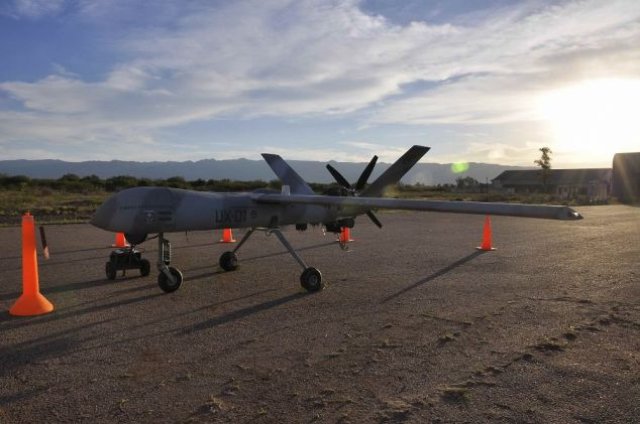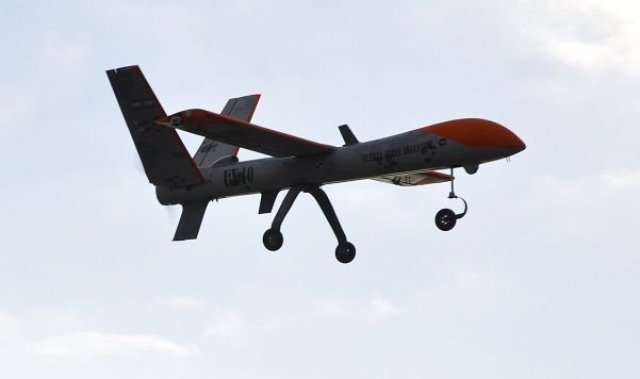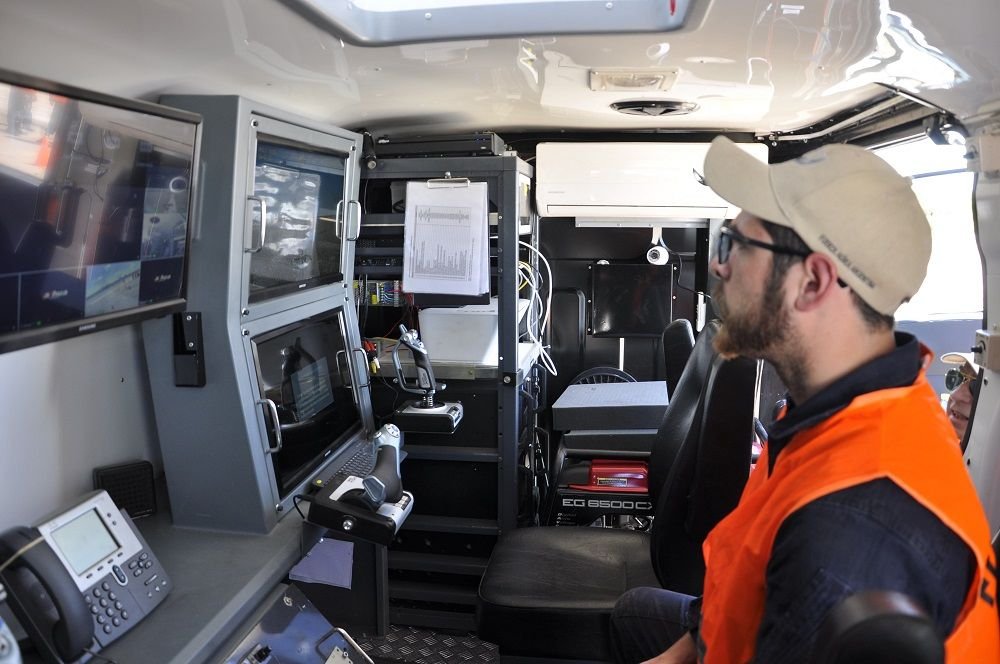The Argentine Air Force is developing unmanned aerial vehicles (UAVs) with next generation equipment for surveillance, control, and search-and-rescue operations. The Aukán and Vigía 2B prototypes, currently in the evaluation phase, are the result of joint efforts from two bodies of the Argentine Air Force: the Directorate General for Research and Development (DGID, per its Spanish acronym) and the Center for Applied Research.
“This development project uses entirely domestic engineering,” Major General Guillermo José Alsúa, the chief of the Argentine Air Force’s UAV System Implementation Program (SART, per its Spanish acronym), told Diálogo. “Every member of the engineering team involved in the development process belongs to the Argentine Air Force.”
According to Maj. Gen. Alsúa, Aukán and Vigía 2B “are a break from the traditional concept, still seen in many air forces, that everything that flies involves a pilot or an operator in the aircraft.” The rollout of this program “reflects the Air Force’s need to change the way such weapons systems are incorporated into the institution,” he added.
“UAVs can serve as support not only for military operations, but also for community assistance and natural disaster situations,” Maj. Gen. Alsúa explained. “Aukán will operate within a tactical range of up to 150 kilometers from base,” he stated. “In turn, Vigía 2B can operate from practically any distance, regardless of the location of the base.”
Colonel César Daniel Cunietti, the assistant director of Research and Development for the Argentine Air Force, toldDiálogo that security forces, as well as different government agencies, could benefit from the real-time information drones generate. “They could be used by the Ministry of Agriculture or the Ministry of Science and Technology for example, to do different surveys, such as the progress of crops and harvests,” Col. Cunietti added.
Vigía 1 and Vigía 2A
The development process for these Argentine drones began in 2010, through a comprehensive approach between DGID and the Center for Applied Research. “The team first developed a model that was tested in a wind tunnel, which allowed for the simulation of flight conditions and to take precise measurements,” Maj. Gen. Alsúa said. From that model, the first unit, Vigía 1, was produced as a small electric prototype with a pusher configuration (with the propeller mounted behind the engine) and a V-shaped tail, he added.
Following positive results with Vigía 1, the Air Force began producing another prototype — Vigía 2A — which weighs about 840 pounds, and has a 26-foot wingspan and a 60-horsepower engine. Since its first flight in 2015, Vigía 2A continues to fly successfully. “We will keep Vigía 2A as a model to evaluate technology to test sensors, autopilot systems and communication systems that will later become part of the two prototypes to be mass-produced for the Air Force,” Maj. Gen. Alsúa stated.
Aukán: operations in the tactical environment
One such prototype is Aukán, which weighs between 200 and 220 pounds. Even though it is a Class I model (about 330 pounds or less), it has next generation equipment to train pilots who will later be flying the heavier Vigía 2B prototype.
“Aukán will initially equip the Military Aviation Academy. Given its equipment and features, it’s a good model for operations in the tactical environment,” Maj. Gen. Alsúa said. “That means that it can serve as support not only in military operations, but also in community assistance tasks, disaster situations, and logistics support, among other government functions.”
Aukán has a high-definition multi-sensor system, infrared vision and a designator to track targets in motion. With a 20-horsepower engine, it has already successfully performed several flight tests. “We’ve checked several units, and technical and budgetary issues notwithstanding, Aukán should be ready for mass production beginning in 2018,” Maj. Gen. Alsúa said.
Vigía 2B: operational tasks
The Vigía 2B prototype is even more advanced and will be certified under NATO Standardized Agreement (STANAG) 4671. Its dimensions were increased in order to end up with a vehicle that could comprehensively meet the Operational Requirements of the Air Force.
“We chose an engine over 120 horsepower, and that transformed the aircraft into a Class II heavy unit with a MTOW [maximum takeoff weight] of 2,100 pounds, which will carry the electronic systems and sensors almost of a Class III,” Maj. Gen. Alsúa explained. “In other words, it’s a heavy Class II, but with many of the capabilities that would make it a Class III.”
The Air Force plans to develop three Vigía 2B prototypes. Each will undergo different tests in flight and on the ground. The first prototype will mostly focus on in-flight testing, flight characteristics, speeds and altitudes. The second will have sensor integration, while the third will meet all of the requirements for production.
“The first prototype should be ready for ground testing by the end of this year [2017] or the beginning of next. Which means that, excluding any major issues, it could do its first flight by the middle of next year [2018],” Maj. Gen. Alsúa said. “Vigía 2B will be used for operational duties, which are the typical military duties SART teams carry out. It will also have greater capacity to cover disasters and assist communities,” he stated. “We estimate that it will end up being an aircraft with more than 15 hours of autonomy.”
Ground control station
Another Air Force achievement is the Ground Control Station (GCS) that operates domestically manufactured UAVs. GCS has command posts for the UAV operator, systems controller and mission commander. “GCS is the same for Aukán and Vigía 2B,” Maj. Gen. Alsúa explained. “And since Aukán flies with equipment that’s similar to Vigía 2B, transferring an operator trained on Aukán to a heavier unit is much quicker and more efficient.”
Chamical UAV Operations Center
One of the Air Force’s future SART operations centers is at Chamical Air Base in the province of La Rioja. The base is in the process of being reactivated. “The goal is for the base to be converted into a center where tests and flights can be done at once with drone operators and pilots from all of the armed forces,” Argentine Defense Minister Julio Martínez stated during a visit to the base on February 24th.
The Self-Propelled Projectiles Experimentation and Launch Center, under DGID, is operational at that military facility. “In Chamical, we have the advantage of having quite a large amount of air space restricted for specific use by Argentine Air Force, with no air traffic congestion,” Col. Cunietti added.
“But it would be erroneous to think that Chamical will be the only place for launching UAVs. Precisely, one of the advantages of these vehicles is that they are quite adaptable. They will be able to be operated from airports and from locations with dirt runways with no need for radio assistance on the ground. But within that context, Chamical is incredibly interesting for our current stage,” Col. Cunietti concluded.
Source: DIALOGO



